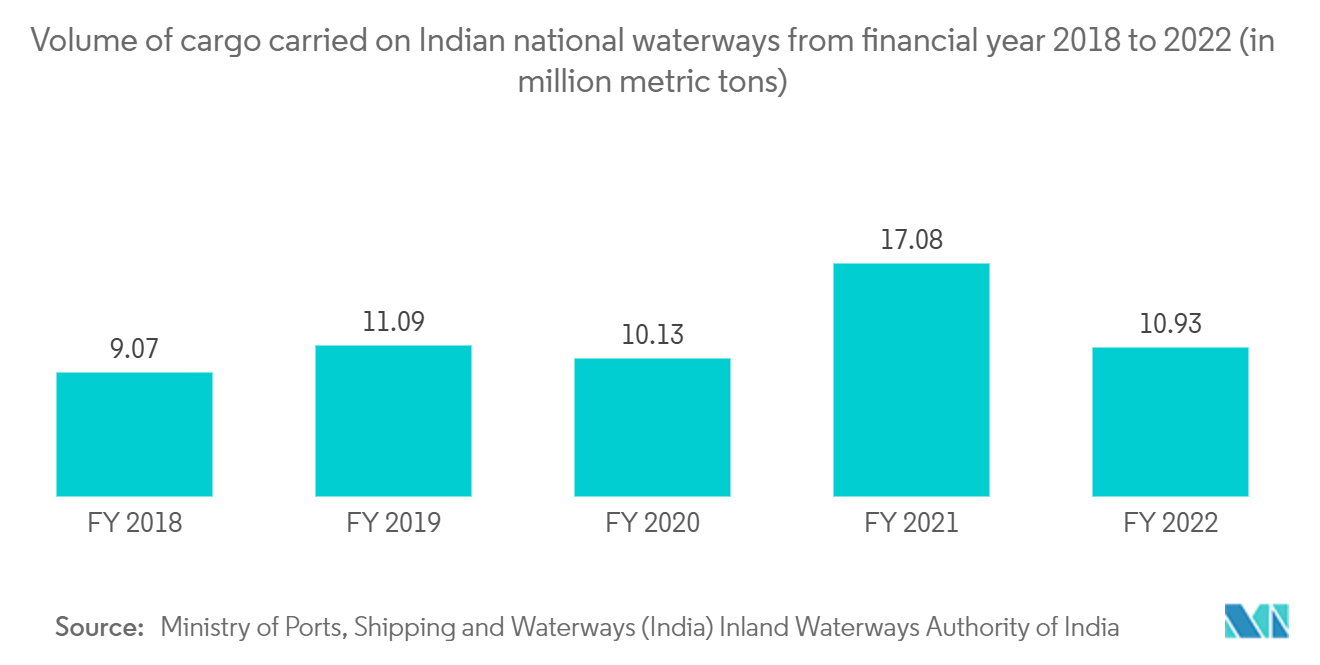Market Trends of Inland Water Freight Transport Industry
The Demand for Transporting Goods in Large Quantities is Increasing
Increased iron ore shipments from Brazil and rising inventories in China have significantly boosted capesize freight rates. Shifting trade routes away from the Red Sea and Panama Canal has further heightened demand in smaller vessel segments, as these routes become less congested and more efficient for certain types of cargo.
Projections suggest a 2-3% increase in grain shipments in 2024, with estimates ranging from 0.5 to 1.5% in 2025. Specifically, maize shipments are expected to rebound in 2022, driven by favorable weather conditions and improved agricultural practices. Meanwhile, soybean shipments are poised to hit record highs due to increased global demand and expanded cultivation areas.
Industries like agriculture and energy heavily rely on bulk transportation for their day-to-day operations and to sustain growth. Agriculture, for example, depends on bulk transport to move crops, livestock feed, and other goods from farms to processing and distribution hubs. This ensures that produce reaches markets promptly, maintaining supply chain efficiency. Similarly, energy uses bulk transportation to move crucial resources like crude oil, natural gas, and coal, which are essential for electricity generation, heating, and fuel production. Efficient bulk transport helps stabilize energy supplies and manage costs.
Despite challenges such as high interest rates and inflation, the global economy's demand for dry cargo has shown resilience. In 2023, it grew by over 5%, mainly driven by key commodities such as iron ore, coal, and grains, which are fundamental to various industrial processes and consumer needs.
Iron ore, a dominant force in the dry bulk market, continues to see strong demand due to its critical role in steel production, which underpins construction and manufacturing industries worldwide. Surprisingly, coal, the market's second-largest commodity, has not only held its ground but also defied expectations of a decline amidst the global energy transition as certain regions continue to rely on coal for energy security.
Additionally, there is a rising appetite for grains, particularly soybeans and other 'minor bulk' commodities. In 2023, soybean demand surged by over 10%, buoyed by a growing global population and changing dietary preferences favoring protein-rich foods and plant-based diets.

Asia-Pacific is the Fastest Growing Market for Inland Water Freight Transport
As a result of an increase in the demand for practical and cost-effective inland waterway transport, it is projected that by 2032, there will be remarkable growth in the inland waterway vessel market from freight vessels. It is essential for the logistics, agriculture, and manufacturing sectors that freight ships can transport a wide range of cargo, including containerships and freighters.
Shortly, electric ships, boats, and barges will be able to navigate much of China's vast inland waterway network. To reduce emissions from inland waterway transport, a growing number of regions along the country's major rivers and coasts have stepped up support for electric ships, with more than 100,000 passenger and freight vessels operating within the country.
From FY22 to FY23, Indian inland waterway traffic increased by at least 16% year-over-year to 126.15 million tonnes, compared to 108.79 million tonnes in the previous year. Some five-odd waterways were functioning in three states, namely Assam, Odia, and Kerala. The Ministry has also sanctioned over INR 6,600 crore (USD 79.65 million) for infra development across the national waterways, including developing five new ones. India has 111 national waterways (NW), including five existing ones and 106 newly declared ones spread across 24 states.
India wants to expand its ambition to connect rivers throughout Southeast Asia to Thailand to interconnect local river channels and boost trade. Shippers, logistics players, and cargo owners should benefit from the planned international waterways network, which will span over 5,000 km and pass through eight nations.
Moreover, market growth is driven by regional governments investing in infrastructure development and the modernization of inland waterway transport networks. These factors contribute to the development of the Asia-Pacific market as a whole. In addition, as part of its efforts towards reducing emissions and promoting eco-friendly shipping solutions, COSCO Shipping Development, a subsidiary of COSCO Shipping Corporation, launched an electric cargo ship in July 2023.


